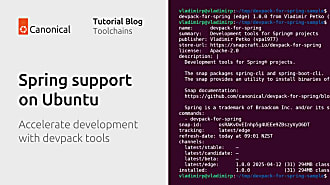Chris Schnabel
on 27 March 2024
Ubuntu 23.10 experimental image with x86-64-v3 instruction set now available on Azure
Canonical is enabling enterprises to evaluate the performance of their most critical workloads in an experimental Ubuntu image on Azure compiled with x86-64-v3, which is a microarchitecture level that has the potential for performance gains. Developers can use this image to characterise workloads, which can help inform planning for a transition to x86-64-v3 and provide valuable input to the community working to make widespread adoption of x86-64-v3 a reality.
The x86-64-v3 instruction set enables hardware features that have been added by chip vendors since the original instruction set architecture (ISA) commonly known as x86-64-v1, x86-64, or amd64. Canonical Staff Engineer Michael Hudson-Doyle recently wrote about the history of the x86-64/amd64 instruction sets, what these v1 and v3 microarchitecture levels represent, and how Canonical is evaluating their performance. While fully backwards compatible, later versions of these feature groups are not available on all hardware, so when deciding on an ISA image you must choose to maximise the supported hardware or to get access to more recent hardware capabilities. Canonical plans to continue supporting x86-64-v1 as there is a significant amount of legacy hardware deployed in the field. However, we also want to enable users to take advantage of newer x86-64-v3 hardware features that provide the opportunity for performance improvements the industry isn’t yet capitalising on.
Untapped performance and power benefits
Intel and Canonical partner closely to ensure that Ubuntu takes full advantage of the advanced hardware features Intel silicon offers, and the Ubuntu image on Azure is an interim step towards giving the industry access to the capabilities of x86-64-v3 and understanding the benefits that it offers. Intel has made x86-64-v3 available since Intel Haswell was first announced a decade ago. Support in their low power processor family is more recent, arriving in the Gracemont microarchitecture which was first in the 12th generation of Intel Core processors. Similarly, AMD has had examples since 2015, and emulators such as QEMU have supported x86-64-v3 since 2022. Yet, with this broad base of hardware availability, distro support of the features in the x86-64-v3 microarchitecture level is not widespread. In the spirit of enabling Ubuntu everywhere and ensuring that users can benefit from the unique features on different hardware families, Canonical feels strongly about enabling a transition to x86-64-v3 while remaining committed to our many users on hardware that doesn’t support v3. x86-64-v3 is available in a significant amount of hardware, and provides the opportunity for performance improvements which are currently being left on the table. This is why we believe that v3 is the next logical microarchitecture level to offer in Ubuntu, and Michael’s blog post explains in greater detail why v3 should be chosen instead of v2 or v4.
Not just a porting exercise
The challenge with enabling the transition to v3 is that while we expect a broad range of performance improvements depending on the workload, the results are much more nuanced. From Canonical’s early benchmarking we see that certain workloads see significant benefit from the adoption of x86-64-v3; however there are outliers that regress and need further analysis.
Canonical continues to do benchmarking, with plans to evaluate different compilers, compiler parameters, and configurations of hostOS and guestOS. In certain cases, such as the Glibc Log2 benchmark, we have reproducibly seen up to a 60% improvement. On the other hand, we also see other benchmarks that regress significantly. When digging in, we found unexpected behaviour in the compiled code. For example, in one of the benchmarks we verified an excessive number of moves between registers, leading to much worse performance due to the increased latency. In another situation, we noticed a large code size increase, as enabling x86-64-v3 on optimised SSE code caused the compiler to expand it into 17x more instructions, due to a possible bug during the translation to VEX encoding. With community efforts, these outliers could be resolved. However, they will require interdisciplinary collaboration to do so. This also underscores the necessity of benchmarking different types of workloads, so that we can understand their specific performance and bottlenecks. That’s why we believe it’s important to enable workloads to run on Azure, so that a broader community can give feedback and enable further optimisation.
Try Ubuntu 23.10 with x86-64-v3 on Azure today
The community now has access to resources on Azure to easily evaluate the performance of x86-64-v3 for their workloads, so that they can understand the benefits of migrating and can identify where improvements are still required. What is being shared today is experimental and for evaluation and benchmarking purposes only, which means that it won’t receive security updates or other maintenance updates you would expect for an image you could use in production. When x86-64-v3 is introduced for production workloads there will be a benefit to being able to run both v3 and v1 depending on the workload and hardware available. As is usually the case, the answer to the question of whether to run on a v3 image or a v1 image is ‘it depends’. This image provides the tools to answer that cost, power, and performance optimisation problem. In addition to the availability of the cloud image on Azure, we’ve also previously posted on the availability of Ubuntu 23.04 rebuilt to target the x86-64-v3 microarchitecture level, and made available installer images from that archive. These are additional tools that the community can use to benchmark, when cloud environments can’t be targeted.
In order to access the image on Azure and use it, you can follow the instructions in our discourse post. Please be sure to leave your feedback there, or Contact us directly to discuss your use case.



